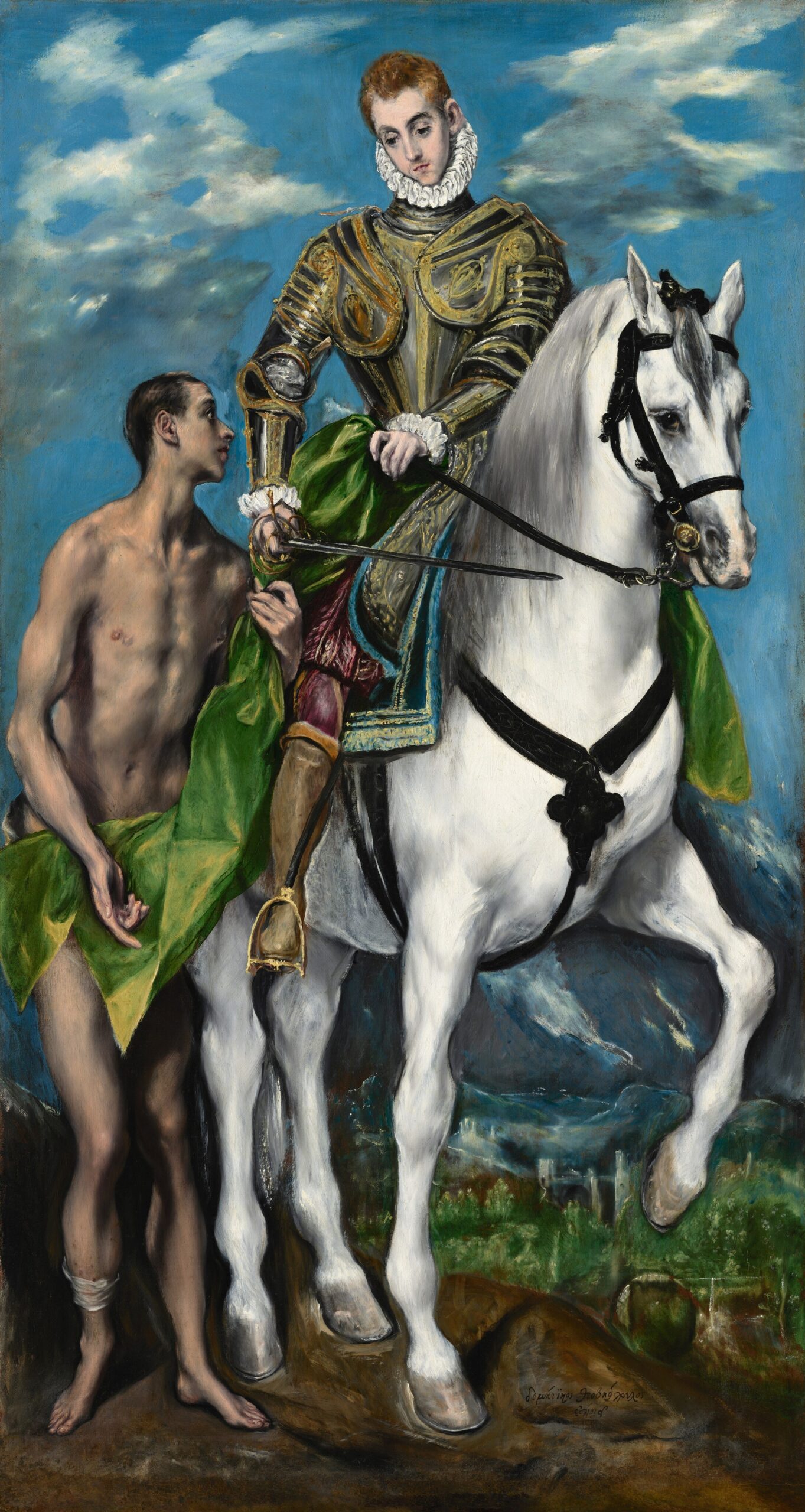
St Martin and the Beggar”, El Greco, 1597-99, National Gallery of Art, Washington.
St Martin was a Roman soldier who lived in the 4th Century. On a cold winter’s day, while stationed near Amiens in Gaul, he came upon a beggar who was shivering from the cold. Without hesitation, he drew his sword, divided his cloak in two and gave half of it to the beggar. Tradition says that afterwards St Martin had a dream in which Christ said to him, “What you have done for that poor man, you have done for me”. St Martin converted to Christianity and in time became the Bishop of Tours. After his death devotion to St Martin spread quickly and he became an exemplar of charity, chastity and piety. Of all the images known to me of St Martin and the poor man, I think that this one by El Greco is the most beautiful. It was commissioned for the Chapel of San José in Toledo. The man who commissioned these paintings for his family chapel, was Martin Ramírez, who no doubt wished to include an image of his name saint and aspired to these virtues. The painting is almost 2m in height and so the saint astride his white horse and the beggar must have towered over the viewer. El Greco included a view of Toledo at eye level and showed the saint as a 16th Century knight wearing a suit of armour with gold inlay. The armour suggests his previous occupation and maybe also the life of holiness to which he was converted on that day. As was his style, El Greco has elongated the figure of the poor man, but his intention may have been to suggest that his true identity was that of Christ. One thing you might not know is that the other half of the cloak ,or ‘cappa’, retained by St Martin was preserved as a relic and was carried by armies into battle. The temporary structure built to house the relic was known as a ‘cappella’ and the priests who served the soldiers as ‘cappellani’, from which we get the English words chapel and chaplain. St Martin of Tours, by your intercession may we grow in compassion for those in need.
The Catholic Chaplaincy serves the students and staff of the University of Edinburgh, Edinburgh Napier University and Queen Margaret University.
The Catholic Chaplaincy is also a parish of the Archdiocese of St Andrews and Edinburgh (the Parish of St Albert the Great) and all Catholic students and staff are automatically members of this parish.